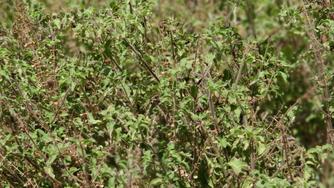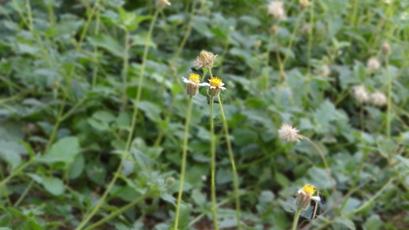 Tamil has over 200 words for Tulasi
Tamil has over 200 words for Tulasi National Medicinal Plants Board has an online database of vernacular names for medicinal plants. A search for Tamil words for karuttulasi, a species of Tulasi plant, for instance, throws as many as 228 results. Among over 1,22,000 vernacular names for herbs listed by this online database, Hindi, Kannada and Telugu put together account for about 42,000 herbs. Sanskrit itself has only about 20,000 words. However, Tamil alone accounts for over 41,700 vernacular words.
 "Thatha Poo", a common sight in Tamil Nadu, is powerful healer of wounds
"Thatha Poo", a common sight in Tamil Nadu, is powerful healer of wounds But still is the new generation aware of the gifts of mother nature to Tamil Nadu. Home remedies - also known as paattivaithyam, naattu marundhu, and mooligai maruththuvam - are in the decline, and hence, many young students - especially those who study in cities - do neither know how a popular medicinal plant like Tulasi or Kuppaimeni looks like nor its medicinal values.
Siddhars devoted a large part of their life in experimenting herbs and minerals and introduced formulations - from small herbal preparations to the potent medicines which have no expiry. However, their contributions are not taught to students, including those who study modern medicine.
The result: It is difficult to come across an Indian doctor of modern medicine talk good about Indian traditional medicine, including Ayurveda. In the case of China, it is difficult to find a single Chinese doctor to talk ill of Chinese traditional medicine. It is high time we introduced contribution of our forefathers to medicine at least to students who study medicine.
It is to be noted that around 70% of all new drugs introduced in the United States in the past 25 years have been derived from natural products (according to Journal of Natural Products), and more than half of all anti-cancer drugs introduced since the 1940s are either natural products or medicines derived directly from natural products.

 RSS Feed
RSS Feed
